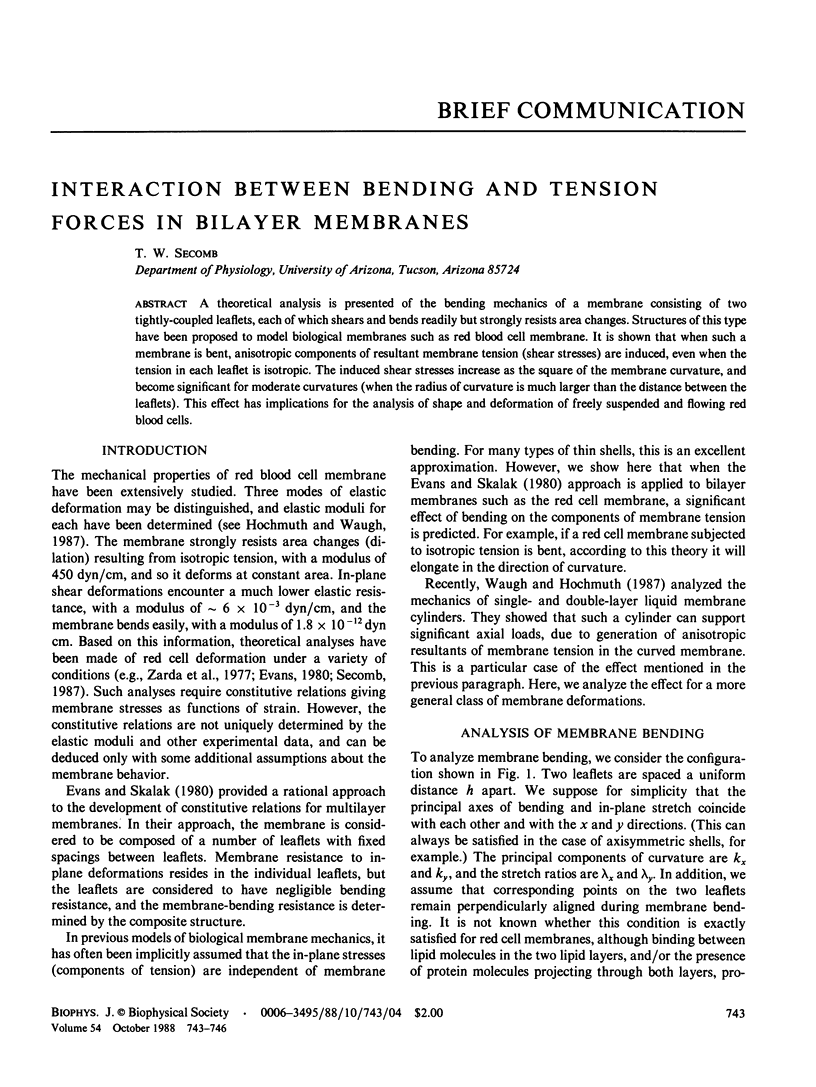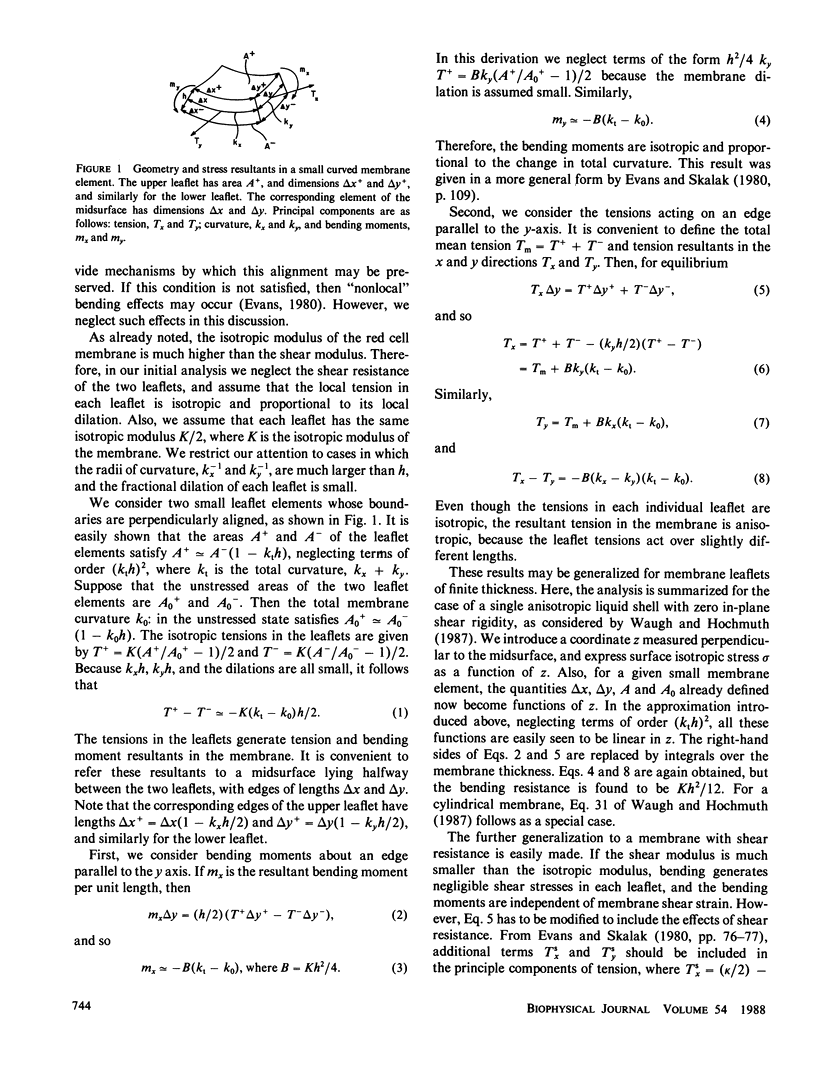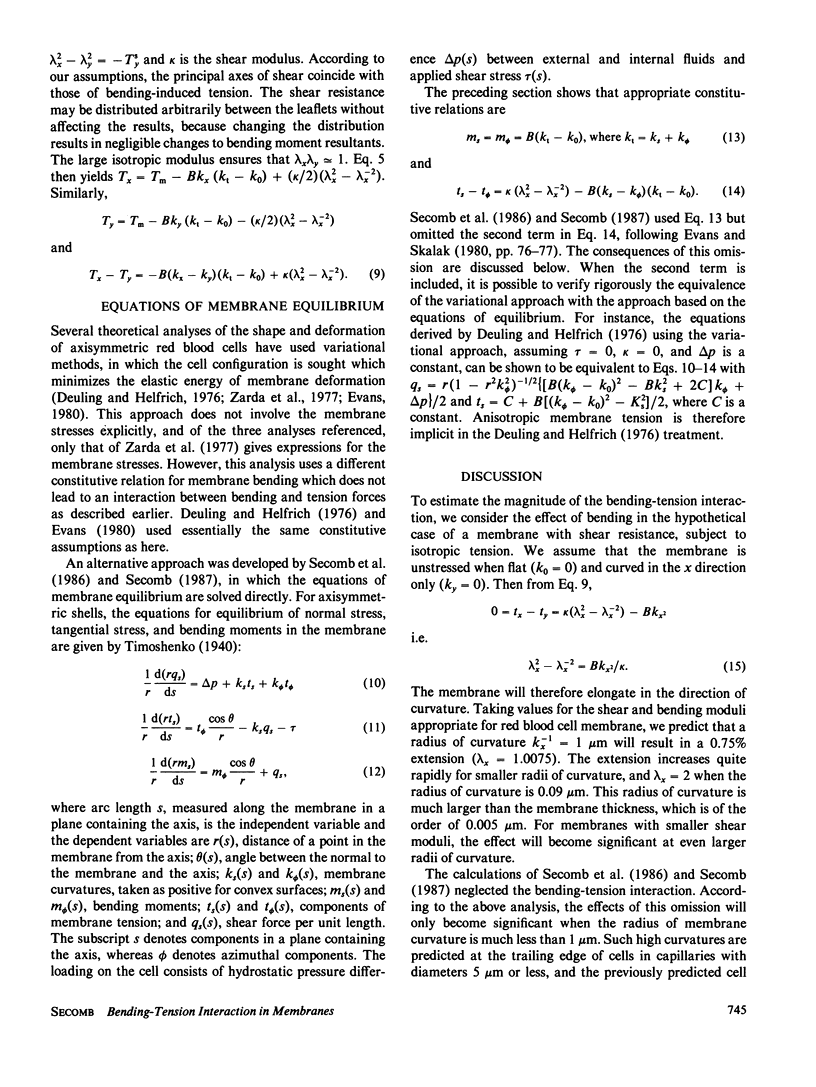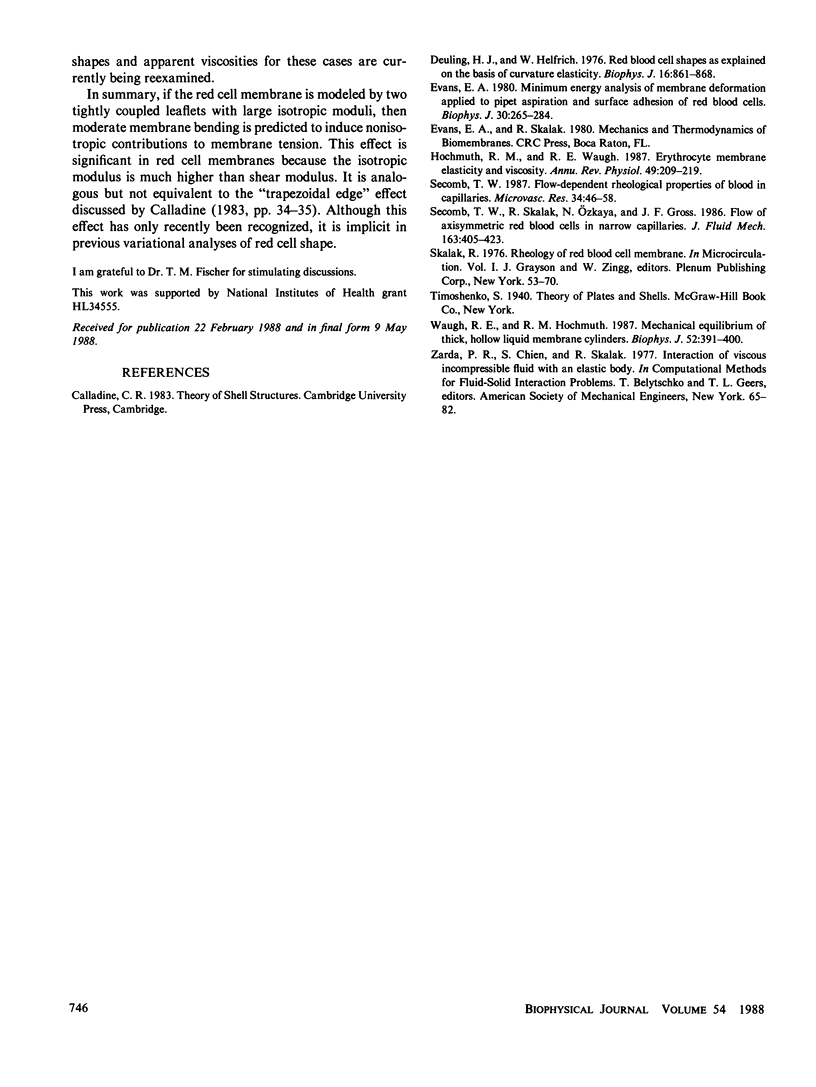Abstract
A theoretical analysis is presented of the bending mechanics of a membrane consisting of two tightly-coupled leaflets, each of which shears and bends readily but strongly resists area changes. Structures of this type have been proposed to model biological membranes such as red blood cell membrane. It is shown that when such a membrane is bent, anisotropic components of resultant membrane tension (shear stresses) are induced, even when the tension in each leaflet is isotropic. The induced shear stresses increase as the square of the membrane curvature, and become significant for moderate curvatures (when the radius of curvature is much larger than the distance between the leaflets). This effect has implications for the analysis of shape and deformation of freely suspended and flowing red blood cells.
Full text
PDF



Selected References
These references are in PubMed. This may not be the complete list of references from this article.
- Deuling H. J., Helfrich W. Red blood cell shapes as explained on the basis of curvature elasticity. Biophys J. 1976 Aug;16(8):861–868. doi: 10.1016/S0006-3495(76)85736-0. [DOI] [PMC free article] [PubMed] [Google Scholar]
- Evans E. A. Minimum energy analysis of membrane deformation applied to pipet aspiration and surface adhesion of red blood cells. Biophys J. 1980 May;30(2):265–284. doi: 10.1016/S0006-3495(80)85093-4. [DOI] [PMC free article] [PubMed] [Google Scholar]
- Hochmuth R. M., Waugh R. E. Erythrocyte membrane elasticity and viscosity. Annu Rev Physiol. 1987;49:209–219. doi: 10.1146/annurev.ph.49.030187.001233. [DOI] [PubMed] [Google Scholar]
- Secomb T. W. Flow-dependent rheological properties of blood in capillaries. Microvasc Res. 1987 Jul;34(1):46–58. doi: 10.1016/0026-2862(87)90078-1. [DOI] [PubMed] [Google Scholar]
- Waugh R. E., Hochmuth R. M. Mechanical equilibrium of thick, hollow, liquid membrane cylinders. Biophys J. 1987 Sep;52(3):391–400. doi: 10.1016/S0006-3495(87)83227-7. [DOI] [PMC free article] [PubMed] [Google Scholar]


